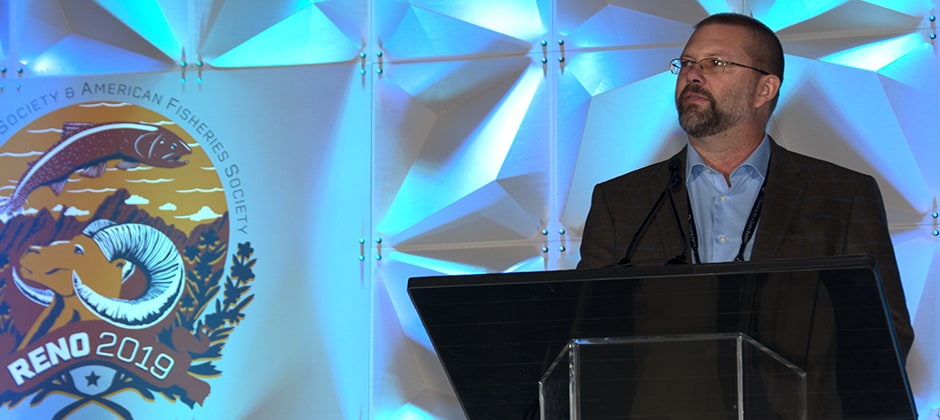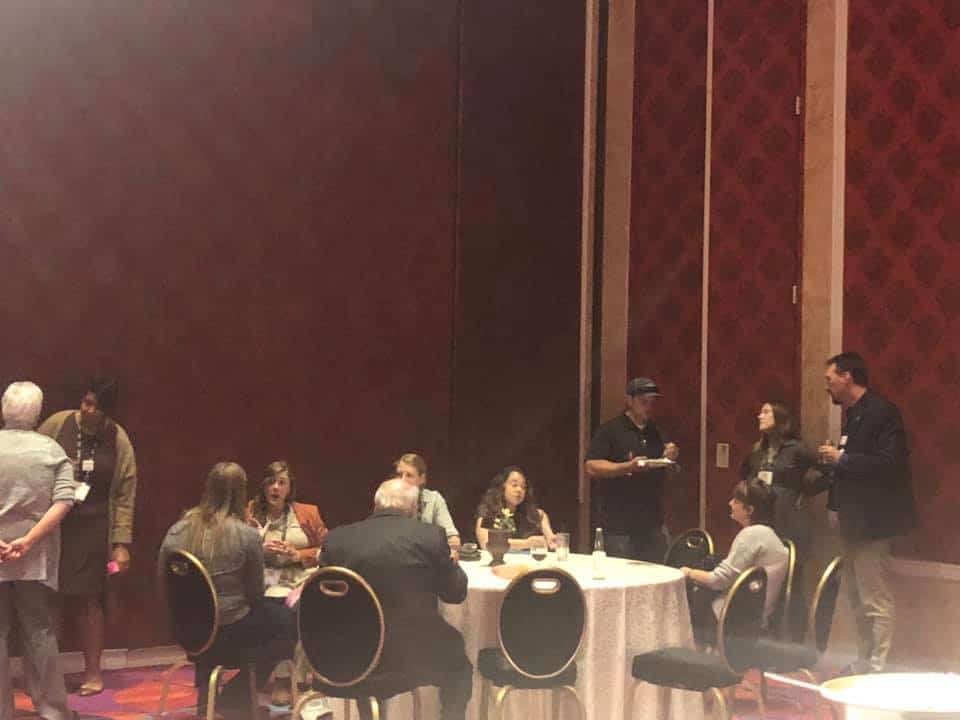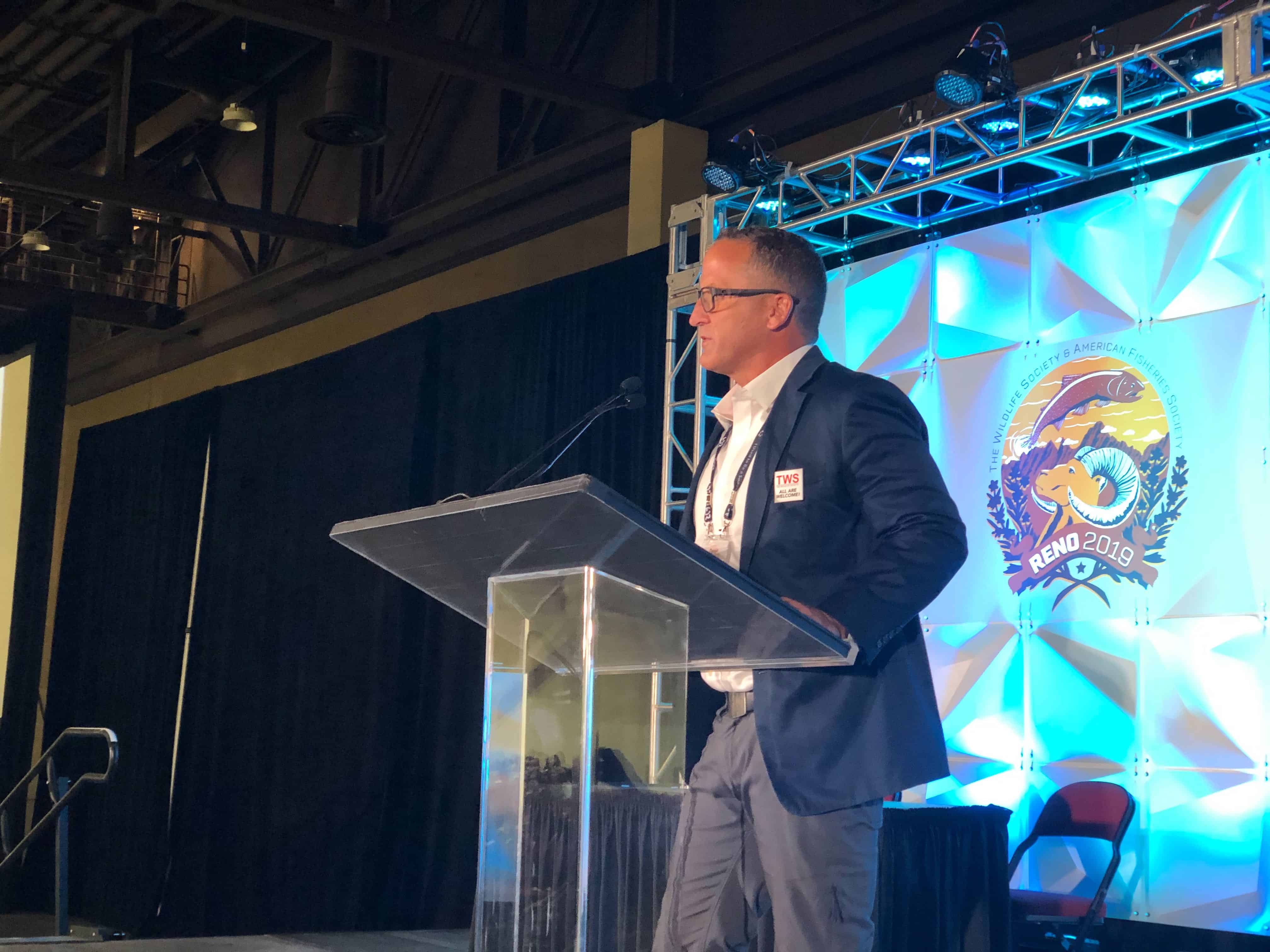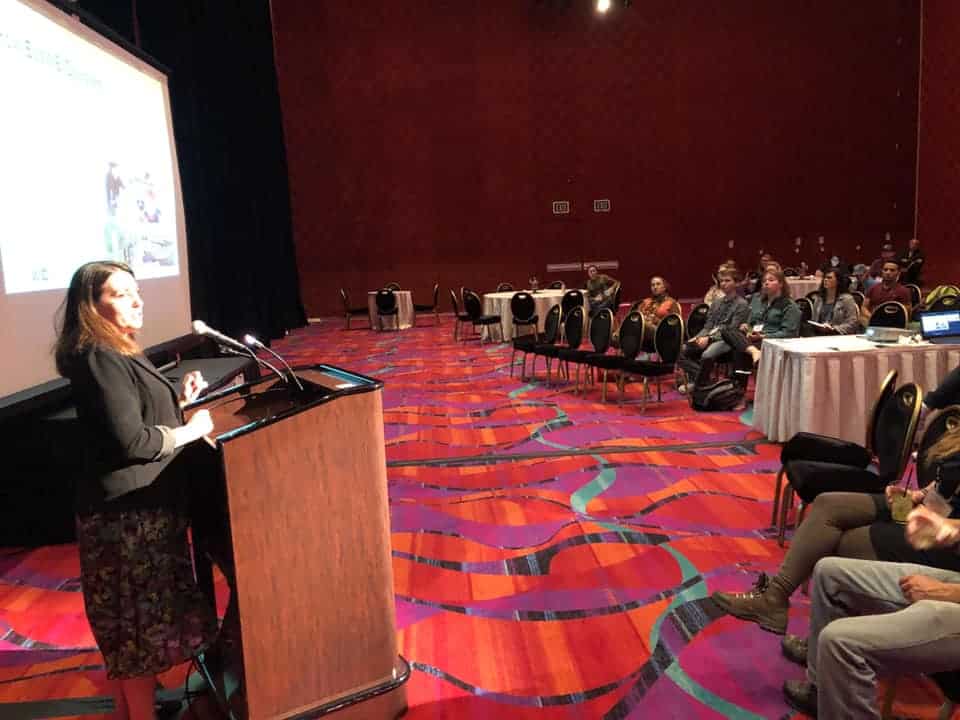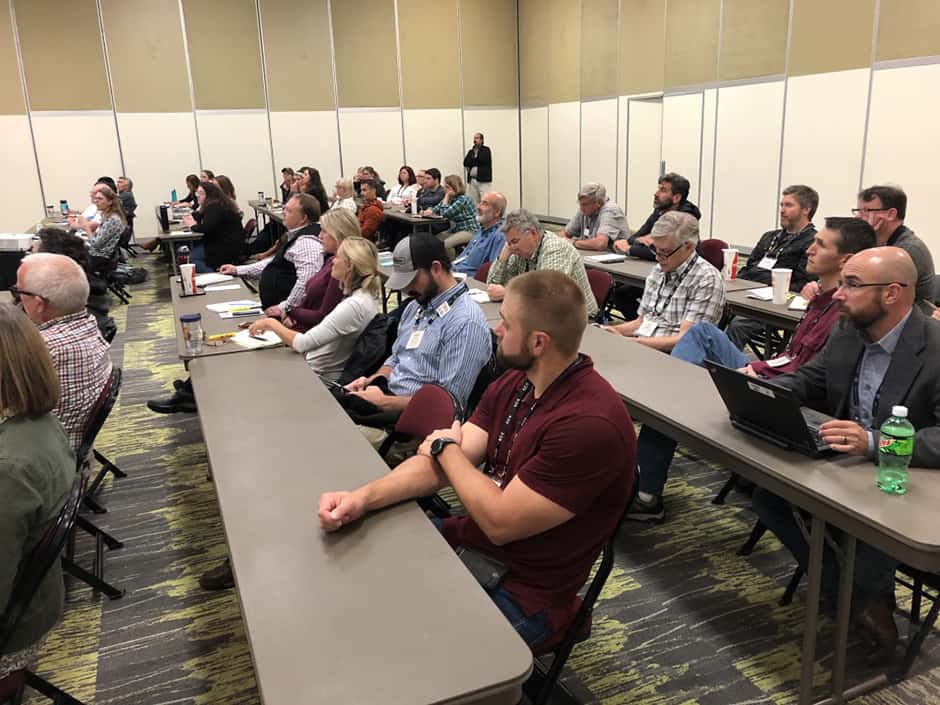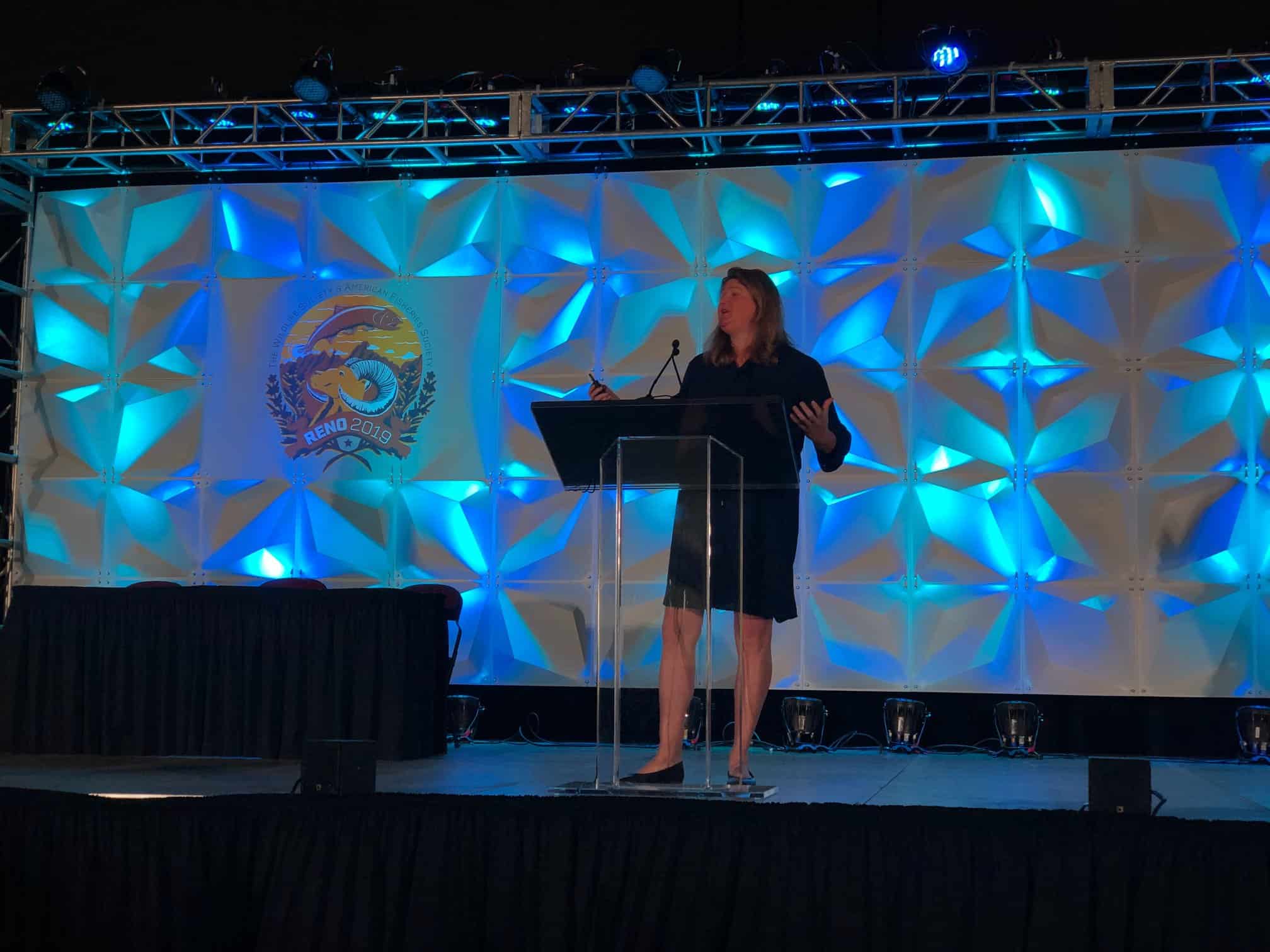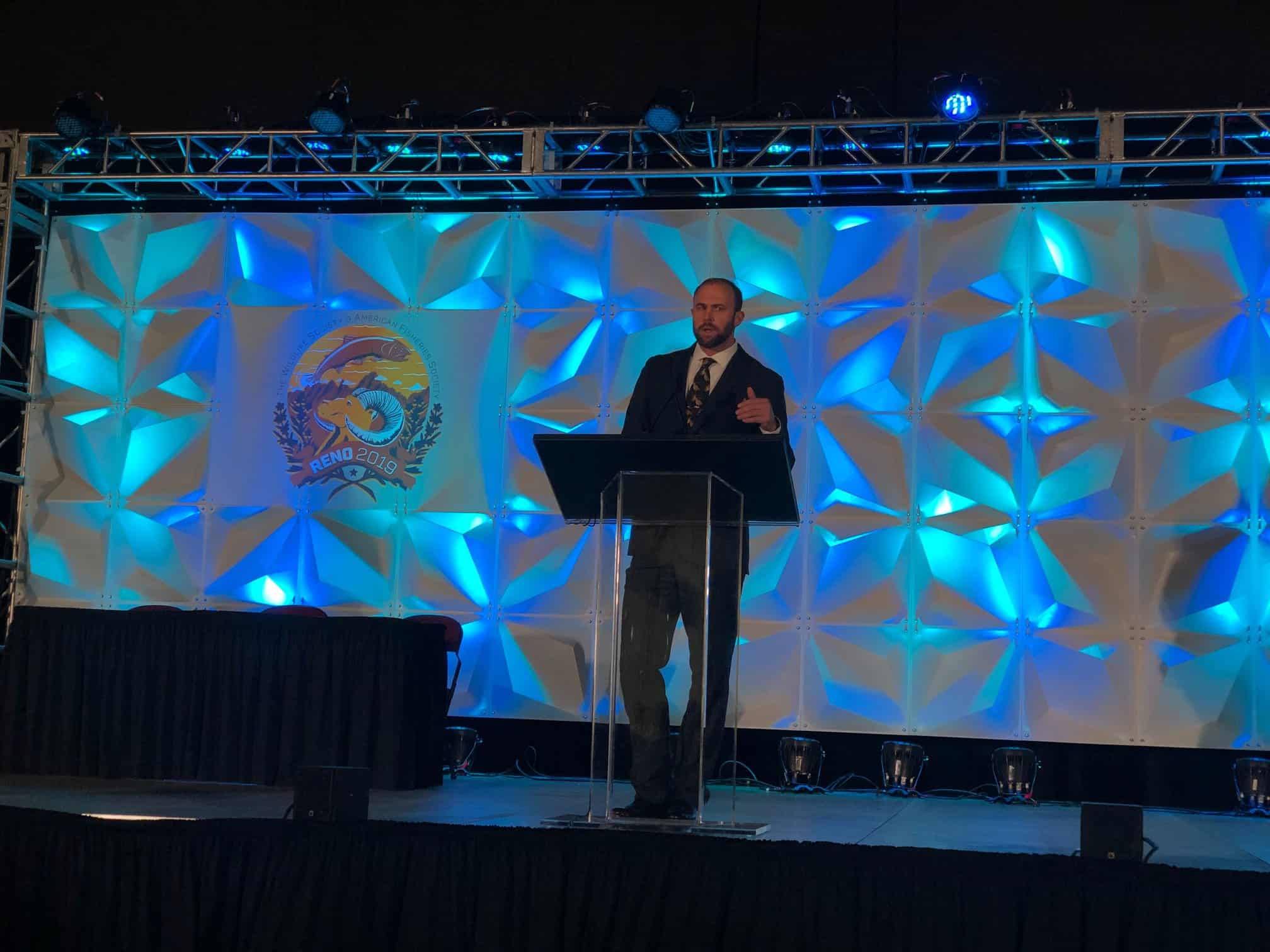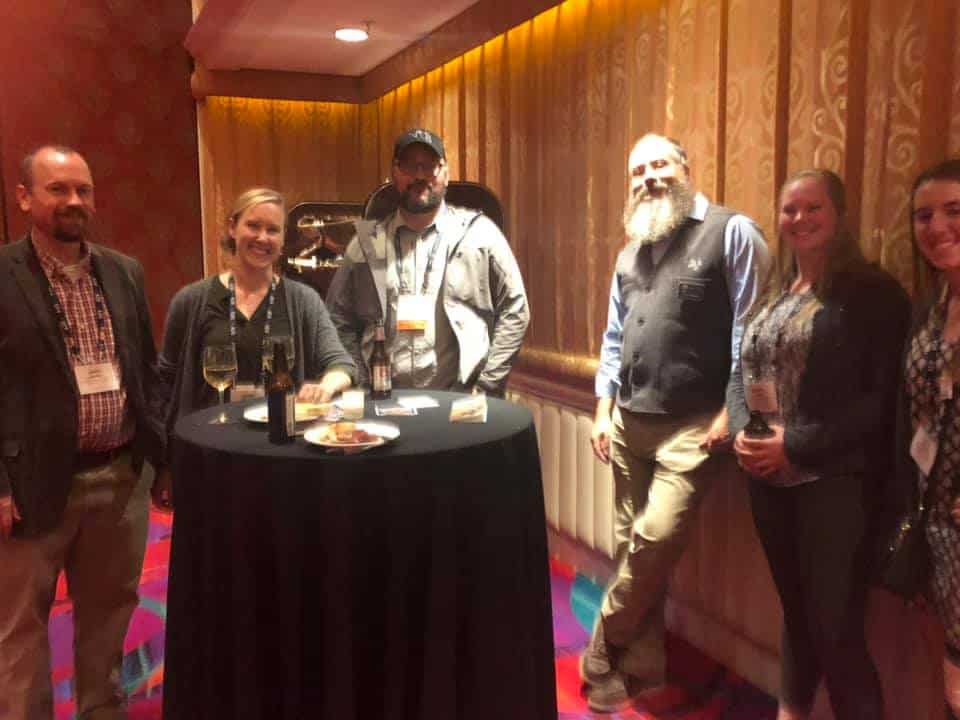Share this article
Conference highlight: Private lands key to conservation
Each day, wildlife.org will round up some of the highlights from the previous day at the American Fisheries Society and The Wildlife Society 2019 Joint Conference. Scroll down for photos from the day’s events, and keep checking back to see what’s happening in Reno.
Conservationists need help from private landowners
At the TWS Caesar Kleberg Keynote speech, presenters underscored the need to work with private landowners for wildlife conservation. “Private landowners care more deeply about land conservation than almost everyone else,” said Forrest Smith, director of the Texas Native Seeds Program, at the Wednesday keynote at the American Fisheries Society and The Wildlife Society 2019 Joint Conference in Reno, Nevada.
About 60% of U.S. land is held by private owners, Smith said, and while much attention is focused on public lands, for many species, working with private landowners is critical. This is especially true in Texas, where some 90% of the land is private, including most of the landscape used by the endangered ocelot (Leopardus pardalis).
David Shindle Florida panther coordinator for the U.S. Fish and Wildlife Service, said that incorporating cattle ranchers is critical for the conservation of the panther (Puma concolor couguar), especially if managers hope to help the animals expand their current range and sustain a viable population.
“If we’re not integrating those lands to address this challenge, there is absolutely no question that we will fail,” said Catherine Semcer, research fellow with the Property and Environment Research Center. For private landowners to become more involved, she said, conservationists need to find ways to turn wildlife into an economic asset rather than a liability.
The keynote was sponsored by the Caesar Kleberg Wildlife Research Institute at Texas A&M University-Kingsville.
How international should TWS be?
As the numbers of hunters dwindle, does the North American Model become less relevant? Is it time to look internationally for new models? At the “What Does the Future of TWS International Involvement Look Like?” panel, a team of speakers, organized by Melissa Merrick with the University of Arizona, discussed how international The Wildlife Society should be. Is TWS trying to gain more international members? Is it trying to achieve more exposure? Are there lessons we can take from other countries?
One aspect the speakers focused on was being involved with neighboring countries. The Society has done a good job of implementing involvement from Canada, but more work needs to be done in Mexico, they said. “The North American model is a misnomer — it’s actually the Canadian-American Model,” said speaker Shane Mahoney. “Mexico is not involved. But they are a neighbor with many opportunities.”
One barrier is funding. One participant suggested virtually involving international counterparts in conferences or meetings. Another place to start may be with students. Most students coming into academia are interested in international issues after watching television shows on Discovery Channel and Animal Planet, a participant noted. School curiculums may benefit from becoming more internationally inclined and less North American-focused.
Speakers also discussed becoming involved in global policy and larger organizations like the International Union for Conservation of Nature, which outgoing TWS President Darren Miller said The Wildlife Society will join this year. “We need to integrate and work as a community of a society of practitioners to communicate on a global scale,” Merrick said, “instead of going to other places and have congresses.”
That may be particularly true as regions outside North America emerge as regions most in need of conservation. Mahoney said TWS should be a leader in international and global issues. “We’re heading into quite a crisis in the next 10 years,” he said. “I don’t know anyone except TWS that can deal with this crisis.”
‘The boldest law ever passed’
Wildlifers took an in-depth look at the Endangered Species Act at a session on Wednesday. The 1973 act used frank language noting that some species were declining “as a consequence of economic growth and development untampered by adequate concern and conservation,” noted Frank Muth, with the U.S. Fish and Wildlife Service.
While it laid out a framework to protect endangered and threatened species and their habitat, putting it into practice can be complex, affecting states, industry and even researchers, and often involving litigation. “This is by far the boldest law ever passed in this country and probably the world,” Muth said.
Congratulations to these award recipients
Terry Messmer, W.L. McAtee and G.V. Burger Award for Outstanding Service as an Associate Editor
Steller’s Sea Eagle, Vladimir Masterov, Michael Romanov, Richard Sale, Wildlife Publication Awards, authored book
Wild Migrations: Atlas of Wyoming’s Ungulates, James Meacham, Matthew Kauffman, Hall Sawyer, Alethea Steingisser, William Rudd, Emilene Ostlind, Wildlife Publication Awards, edited book
Effects of Power Lines on Habitat Use and Demography of Greater Sage-grouse (Centrocercus urophasianus), Daniel Gibson, Erik Blomberg, Michael Atamian, Shawn Espinosa, James Sedinger, Outstanding Monograph
Socioeconomic Benefits of Large Carnivore Recolonization Through Reduced Wildlife-Vehicle Collisions, Sophie Gilbert, Kelly Silvy, Casey Pozzanghera, Adam DuBour, Kelly Overduijn, Matthew Smith, Jiake Zhou, Joseph Little, Laura Prugh, Outstanding Article
Factors Limiting Moose at High Densities in Interior Alaska, Alaska Department of Fish and Game, Wildlife Restoration Awards, Wildlife Research and Surveys
Lesser Prairie-Chicken Habitat Use, Survival, and Recruitment, Kansas Department of Wildlife, Wildlife Restoration Awards, Wildlife Management
- Randy DeYoung, of the Caesar Kleberg Wildlife Research Institute, moderates Wednesday’s keynote, “Behind the Gates: Importance of Private Lands to Wildlife Conservation.”
Header Image: Randy DeYoung, of the Caesar Kleberg Wildlife Research Institute, moderates Wednesday’s keynote, “Behind the Gates: Importance of Private Lands to Wildlife Conservation.”



